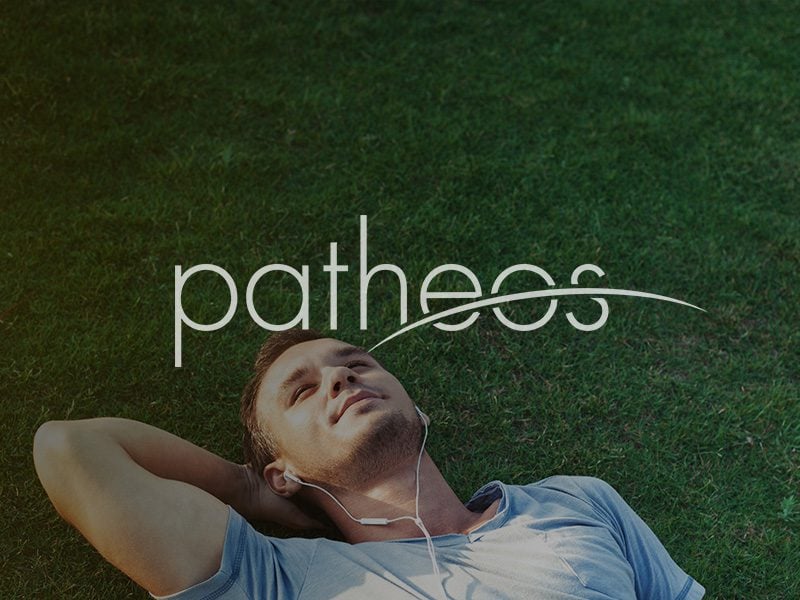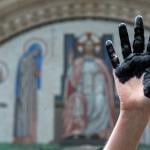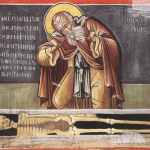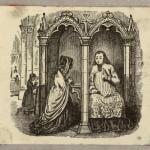A reader writes:
Could you comment in public on the Catholic position on Stillpoint and CV-4 technique?
I witnessed a priest (I think) making use of this at a public blessing mission event. The priest knew a head of time that people would be falling over because he had local parish men all ready instructed as to how to catch the people when they would fall backwards. The men would stand behind the individual who was asking for blessing and healing, and then when the individual relaxed backwards they would lower them gently down to the floor.
What bothered me was this. I do not believe the individuals knew the difference between a healing technique and the presence of the Holy Spirit.
Now, I didn’t attend the whole mission series which started on Sunday eve. I just attended on a Tuesday night and witnessed this event. Maybe the priest DID say something prior about the technique, but I’m thinking that he didn’t.
I saw people in the crowd from a town thirty minutes away. I fully suspect that the main reason that they were there was because “the miracle” of being blown over by the Holy Spirit was gossiping wildly across the land.
Is there really any harm done though? My own husband felt totally touched by the Spirit after his blessing and falling to the floor. I didn’t go up there for the experience.
But I have been “blown” by the Spirit…not to the floor like I saw that Tuesday night. I guess I should have gone up and tried it out and then made comparison.
The Spirit MAY have ALSO been in while this technique was being administered.
I do not know this, though.The technique does not cause physical harm what so ever. But isn’t it kind of deceitful?
I think there should be a discussion on this and the church should look at it.
I’m not familiar with either Stillpoint or CV-4 per se, but this sounds very much like things that are done both in Catholic and Protestant charismatic circles sometimes. The membrane between the two cultures is pretty thin and there’s a lot of cross-pollenization that happens there. So you see this “slain in the Spirit” thing (basically relaxing to the floor as you describe. Me: I think (as is usually the case) that what we are witnessing is a particular sort of piety that has grown up from the grassroots and which God, in his humility, is happy to cooperate with. So I think it’s a sort of volitional enthusiasm in which the pious enter into a contract with God to allow themselves to relax and let the Holy Spirit do whatever it is He does in those moments. I don’t buy that people are somehow “overcome” by the Spirit in a way they can’t control and I would be mighty suspicious of any claims that they are, since “where the Spirit of the Lord is, there is freedom”. Expressions of this piety which *do* stress “the power of the Spirit” as a form of Divine Domination knocking helpless people to the ground should be regarded as sinister, I think. But much of this sort of enthusiasm seems to me to be harmless and, judging from the testimony of people like your husband and others I have known, beneficial.
At the same time, I think such things are quite clearly a hothouse phenomenon and ultimately a flash in the pan in the life of the Church. They seem to me to have grown out of the encounter of Catholic charismatic contacts with sundry Protestant pentecostal phenomena and to have migrated into the Church without a lot of critical thought. God being humble, he cooperates with us in our sincere attempt to please him, even when it’s a bit silly to people of more traditional Catholic piety. But I seriously doubt such phenomena are to be regarded as much more than a temporary phase before moving on the the Main Event: namely, the ordinary life of prayer, fasting, almsgiving and, above all, charity that Paul talks about in 1 Corinthians 13. It is worth noting that Paul pens that magnificant hymn precisely in order to get a Church that is all het up about special effects and cool phenomena to remember that these phenomena are temporary, ordered toward the common good, and nowhere near as important as “faith, hope, and love–but the greatest of these is love.”
Catholics who are put off by such odd displays should bear in mind Romans 14 and pray that all that is done be done “to the Lord.” Catholics who are enthused about such things should ask questions like, “Is this leading me *to* a deeper Catholic faith in word, sacrament and charity or away from these things?” The key, as ever, is “In essential things, unity. In doubtful things, liberty. In all things, charity.”











